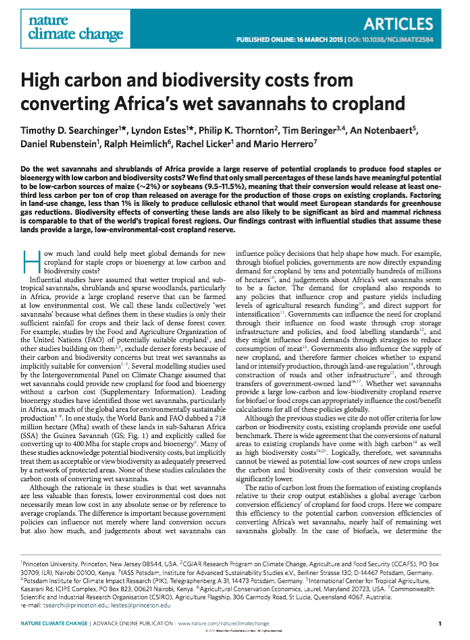High Carbon and Biodiversity Costs from Converting Africa’s Wet Savannas to Cropland

Searchinger, T.D., Estes, L., Thornton, P.K., Beringer, T., Notenbaert, A., Rubenstein, D., Heimlich, R., Licker, R., Herrero, M.: High carbon and biodiversity costs from converting Africa’s wet savannahs to cropland, Nature Climate Change, doi:10.1038/nclimate2584
Do the wet savannahs and shrublands of Africa provide a large reserve of potential croplands to produce food staples or bioenergy with low carbon and biodiversity costs? We find that only small percentages of these lands have meaningful potential to be low-carbon sources of maize (~2%) or soybeans (9.5–11.5%), meaning that their conversion would release at least one-third less carbon per ton of crop than released on average for the production of those crops on existing croplands. Factoring in land-use change, less than 1% is likely to produce cellulosic ethanol that would meet European standards for greenhouse gas reductions. Biodiversity effects of converting these lands are also likely to be significant as bird and mammal richness is comparable to that of the world’s tropical forest regions. Our findings contrast with influential studies that assume these lands provide a large, low-environmental-cost cropland reserve.
